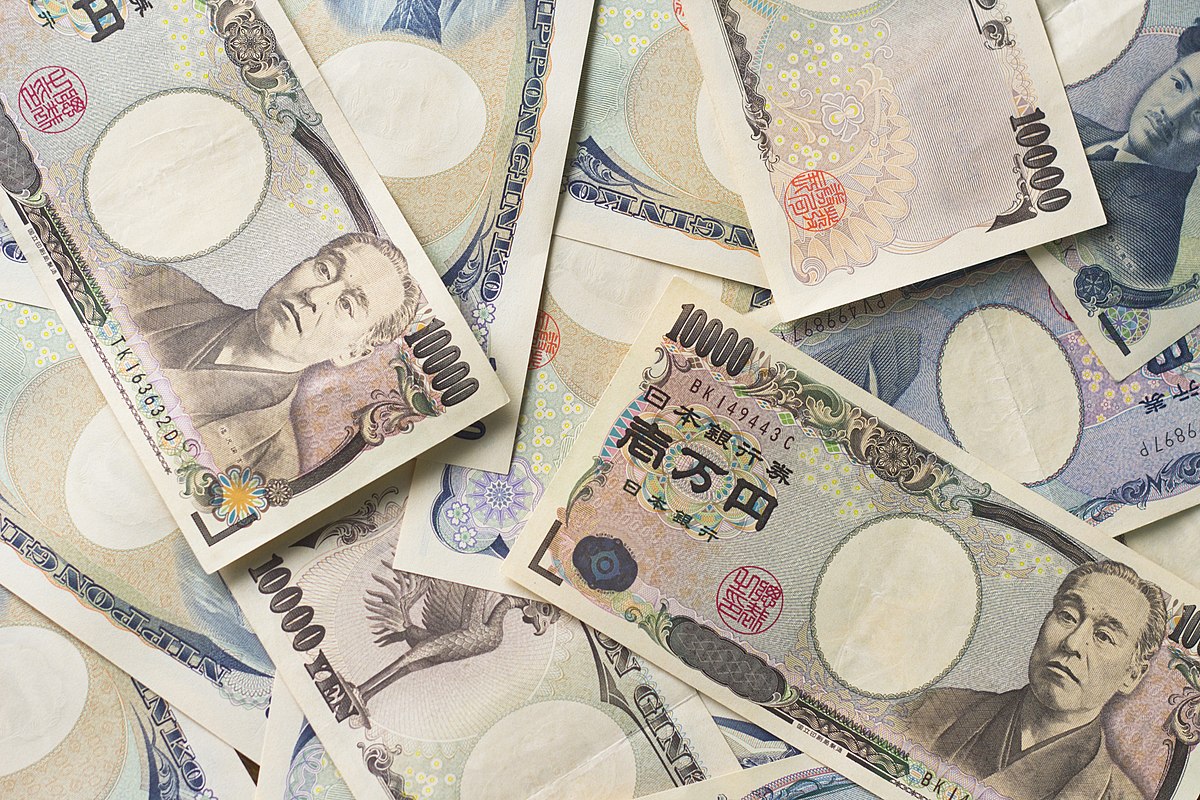Have you ever thought about traveling to another country, such as Italy, France, Spain, China, or Japan? This year, you might have heard lots of people’s plans for picking their tourism destination in Japan, but why? There are many beautiful sites and savory cuisines in Japan; however, are the tourists flocking to see the falling cherry blossoms or the falling of the Japanese yen?
The Japanese yen, also seen as ¥ or JPY, has traditionally been viewed as a safe-haven currency, meaning that during times of global economic uncertainty, investors often move their funds into the yen, believing it to be a stable and reliable store of value. This reputation has been built on several factors including Japan’s economic stability, low inflation rates, substantial foreign exchange reserves, and predominantly domestic debts, creating an environment where the yen is seen as a relatively low-risk asset. However, there might be some changes to this idea.
Since 2021, the Japanese yen has been steadily sliding and has now lost more than a third of its value. The average closing price of the yen and USD exchange rate was 109.84 in 2021, but for a moment, on May 1, 2024, it was trading at 160 yen to 1 USD. This means that U.S. dollars are appreciating (gaining in worth) in comparison to the yen. As of the date of this article’s publication on June 22nd, 2024, the exchange rate is 159.7750 Japanese yen to 1 USD, but it will fluctuate as days pass.
However, isn’t Japan one of the largest economies in the world, ranked number four now?
The depreciation of the Japanese yen is a multidimensional issue driven by several domestic and global causes. Among these, the most visible is Japan’s aging population. Over the past several decades, the country has experienced a significant decline in fertility rates, with the average number of births per woman dropping to just around 1.3 when 2.1 births per woman are needed to keep the society and population stable. Many people do not want to have babies because of the high cost of living with the addition of a baby, so the Japanese government is taking measures to increase the child allowance and financial aid for young couples so they have fewer worries economically, but this is too fast to judge if the measures have been working, because they have only been operating for a while. As the country faces a demographic shift toward an older population and with fewer newborns, concerns regarding economic development and productivity are high. To put this into context, Japan’s population is projected to decline to 63 million in 2100.
As Mr. Fialkow, an Economics teacher at The Bronx High School of Science, said, “An aging workforce could lead to labor shortages, which increases inflation and thereby depreciates the yen’s value. Fewer people abroad would want to purchase the yen when the price level is higher in Japan than elsewhere, decreasing the demand for the currency.” This demographic reality has an impact on consumer purchasing, investment dynamics, and, eventually, the value of the yen.
An important point to bring up is how low the Bank of Japan (BOJ) has set the interest rates. Interest rates are the cost of borrowing money or the return on investment for lending money. Japan’s negative interest rate policy, implemented by the BOJ starting in 2016, aims to stimulate the country’s sluggish economy by promoting spending, borrowing, and investment. When interest rates are low, the cost of borrowing money decreases, the return on savings accounts and fixed-income investments diminishes, and it is thus less expensive for businesses to finance capital investments.
This unconventional monetary policy involves setting interest rates below zero (-0.1%), effectively charging banks for holding excess reserves, which in turn, encourages them to lend more to businesses and consumers. Japan’s central bank began raising interest rates from below 0 to 0.1% only this year during March after struggling for decades with low growth.
As the value of the yen drops, investors are selling it, and they continue selling it as its value continues to drop. This depreciation discourages exporters from converting their foreign earnings into yen, further reducing its demand. As interest in the United States rises, it creates a lucrative opportunity for investors to achieve significantly higher returns compared to those available in Japan. The U.S. Federal Reserve’s benchmark interest rate continues to be set at 5.25-5.50%, while the BOJ’s rate is now just 0-0.1%. Why would investors continue investing in the yen when there are better options with higher yields elsewhere? This is particularly evident in investment vehicles such as government bonds, which become more attractive due to the increased yield resulting from the higher interest rates.
But as Mr. Fialkow suggests, “If Japan is importing more than it is exporting, then Japan should be getting more investment from abroad.”
A declining yen has far-reaching repercussions, affecting a wide range of stakeholders both within and outside of Japan. A lower yen makes Japanese exports cheaper and can help exporters increase their competitiveness and global sales unless global demand for exports declines or if supply chain disruptions occur. Importers, on the other hand, face higher costs, which could result in higher consumer pricing, especially for energy needs. Japanese consumers may also feel the pain as their spending power dwindles, especially for products and services imported from abroad.
When it comes to growth, the yen’s value has plunged to levels not seen in decades, which significantly boosts the purchasing power of tourist dollars in Japan. This favorable exchange rate makes travel to Japan more affordable and attractive for international visitors, resulting in a remarkable surge in the tourism industry.

Irina Kolarova ’25, who visited Japan during Spring Recess in April of 2024, said, “Between the time that we booked the trip and the time that we arrived in Japan, the yen fell by an additional 7%. Because the value of the Japanese yen fell so fast, and we were there right after it had fallen, businesses did not have time to adjust their prices, which made the things that we purchased less expensive than they would have normally been.”
Reflecting this trend, Japan saw an unprecedented influx of tourists in March 2024, with a record-breaking 3 million visitors exploring the country, the highest number ever recorded compared to the 2.99 million visitors in July 2019, pre-pandemic.
So what is going to happen with Japan? At this time, we do not have much information about future steps that the BOJ, the Ministry of Finance, or the government of Japan is planning to take, but they are taking action to help the currency. On May 31st, 2024, the Ministry of Finance confirmed that Japan spent 9.7885 trillion yen (~$62.25 billion) on currency intervention from April 26th, 2024, to May 29th, 2024, to help the yen rebound and strengthen. This involves the method of yen-buying or dollar-selling in this case because it involves actively purchasing yen in the foreign exchange market (U.S.D.) to increase its value by increasing the demand for yen.
According to Goldman Sachs Research, they expect the yen to remain at or above 150 to the dollar, which is way above around 100 yen to 1 U.S.D. previously, for another year or so. And now that summer vacation has arrived, and since the U.S.D. is so strong now, in comparison to the yen, consider visiting Japan and contributing to their tourism economy. Maybe you will be fascinated by Japan just like Kolarova. She noted that the “metro system was not only incredibly organized with barely any delays, but also very clean.”
Irina Kolarova ’25, who visited Japan during Spring Recess in April of 2024, said, “Between the time that we booked the trip and the time that we arrived in Japan, the yen fell by an additional 7%. Because the value of the Japanese yen fell so fast, and we were there right after it had fallen, businesses did not have time to adjust their prices, which made the things that we purchased less expensive than they would have normally been.”

